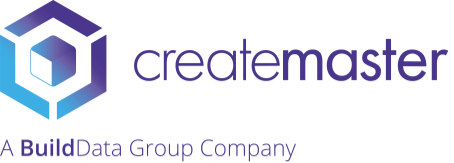What is an Asset Register?
The term “Asset Register” originates from the Accountancy profession and was a mechanism by which an organisation’s finance department could maintain a record of what assets an organisation possessed and their value. An asset was often simply defined by the value of the item, rather than its specific nature or usage. As financial systems evolved assets were no longer required to be physical items, and could also be intangible in nature, such as Goodwill, IP, Titles & Rights.
Within the construction industry, an Asset Register is more closely aligned to the traditional itemised list of a building’s elements & components. However, the FM sector needs further information related to on-going inspection, maintenance, cleaning and replacement activities.
Most assets are associated with building services installations, such as an item of plant or machinery or a system of connected equipment. The FM team manages the whole lifecycle of an asset from purchase, through usage and ongoing maintenance through to disposal and replacement.
Therefore, the completeness of an Asset Register is determined by two dimensions, the scale of the equipment and components to be included, and the range of information to be obtained about each piece of equipment. A useful template example is located within CIBSE’s DE5: Asset Information Requirements.
“Createmaster has fully embraced our digital transformation ambition. Their digital O&Ms are organised logically and easy to access, helping us to improve our asset management and aftercare process, for the benefit of our customers”.
Director of Strategy, Planning and Major Projects – L&Q
What goes into an Asset Register?
The definition should be provided by the end client and / or their advisors and be informed by the requirements of the information’s end users. To achieve this, the client team must understand how the finished building will be managed and which, if any, Computer Aided Facilities Management [CAFM] software is going to be used.
In the above scenario, the client team should be advising the main contractor and the supply chain, based on the CAFM system requirements and provide a data schema for the specific data to be captured for each Asset. This is an example of “bespoke” structured data and will vary from CAFM system to CAFM system.
It is often the case, that the on-going building operation and management is not understood at the time of construction and in these circumstances, the PAS1192 guidance around BIM provides a more generic solution to what asset data will be provided.
The current UK BIM framework for the delivery of structured data provide guidelines for delivery of the Asset Information Requirements based on the generic COBie standard. This approach offers a construction industry standard as to what elements should be included in the Asset Register and the data that should be provided for each asset.
Regardless of approach all asset data, will likely include some of the below items;
- Asset number or ID
- Asset description
- Manufacturer details
- Manufacturer Model/Part number
- System code
- Equipment location
- Warranty end date
- Spares information
- Maintenance tasks and frequency
Why is an Asset Register produced?
The ongoing operating and maintenance costs of an asset over its lifecycle far outweigh the initial cost of purchase. Therefore, good asset management can significantly reduce expenditure and extend the life of a building’s assets.
Production of the Asset Register will facilitate several other immediate benefits to the building owners and managers;
- Directly saves end client costs associated with surveying newly handed over buildings
- Facilitates early provision of maintenance contracts
- Provides a record for insurance purposes of the building’s Assets
- Enables the planned maintenance programme
- Simplifies maintenance processes
- Provides forward visibility of maintenance tasks and the required resources to complete them
When Should an Asset Register be Produced?
The production of an Asset Register is an incremental approach undertaken through the life of a construction project with information progressively delivered against the AIR [where provided]. Where there is no specific client guidance, this is defined in the UK BIM Framework, but broadly aligns with stages in the Digital Plan of Works e.g.
In the design phase, it should be possible to identify all the intended Assets [from their Geometric Objects], their location, their ID and some performance characteristics. In the construction phase, it should be possible to add in some of the As Installed data such as manufacturer, model or part number & warranty ends dates. Prior to handover, commissioning data and final tagging/bar code data can be added.
This proactive approach allows the construction supply chain to provide information when it is at its most readily available. Contrast this to the approach most often seen today where building owners can incur significant additional costs from FM providers charging to undertake a building survey to identify the items they may have to maintain.
Who should produce an Asset Register?
The responsibility should sit within the scope of the main contractor’s agreed handover deliverables managed against the Employers Information Requirements [EIR] or agreed BIM Execution Plan [BEP]. The MEP contractors will be responsible for a significant portion of the information to be provided. We often see this outsourced to the organisation managing the other handover deliverables.
Key Takeaways
- Production of an Asset Register should be included as a standard handover requirement between the main contractor & end client
- Producing the Asset Register in the construction phase provides early visibility to the end client of future maintenance requirements
- If delivered during the construction phase the Asset Register will save the end client significant amounts of money
LEARN MORE ABOUT BEST PRACTICE










